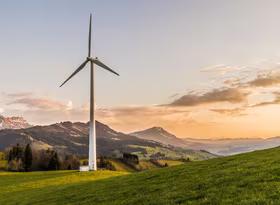
Will OPEC+ oil production cuts lift domestic fuel prices?
The recent announcement by Saudi Arabia, a major oil producing nation, of further cuts to production at a recent OPEC+ meeting have raised expectations that crude oil prices might rise in response. In isolation, a cut to production would likely increase the price of crude – an outcome that Saudi Arabia intends to help balance its budget. But with other economic pressures already pushing oil prices lower, will the recently announced cuts actually shift the oil price?
Regardless, the impending reinstatement of the full fuel excise duty in July will drive a much larger and more immediate lift in domestic petrol prices, which we anticipate will increase by nearly $0.29/L, adding around 0.5 percentage points to the annual inflation rate.
What is OPEC+?
The Organisation of the Petroleum Exporting Countries (OPEC) is an intergovernmental organisation created in September 1960. OPEC was established to co-ordinate and unify the petroleum policies of members countries to ensure the stabilisation of oil markets. As a result, energy ministers from member countries meet and agree on limits for oil production in OPEC nations. The level of these production limits has the potential to influence global oil prices, with the organisation being responsible for around a third of world oil production.
Current OPEC members include oil exporting nations across Africa and Asia, with Venezuela the only member from outside these continents. Saudi Arabia is the largest oil exporting nation in OPEC, and one of the most influential nations in the global oil market. Changes in OPEC production limits are often largely Saudi-driven since Saudi Arabia is the only member of OPEC with sufficient spare capacity and storage to be able to easily change production levels.
In 2016, OPEC allied with other top oil exporting nations from outside OPEC, with this new co-operative being called OPEC+. The largest non-OPEC oil exporting nation to ally itself with OPEC+ is Russia, a nation which also has the ability to change its production levels.
OPEC+ has routinely announced reductions in the level of oil production over the last five to six years. Sometimes the market fails to react to these OPEC+ announcements, but even when changes to OPEC+ production limits do drive changes in crude oil prices, the changes often reverse out over the following weeks. As a result, OPEC+ oil production limits seem to have little direct impact on domestic fuel prices in New Zealand, though the actual level of oil production in OPEC+ countries could be relevant.
OPEC+ keep reducing oil production limits
Our brief analysis of various recent geopolitical events, and OPEC+ production decisions, doesn’t appear to show any enduring effect of most oil production cuts on world oil market prices. Below, we detail a number of events and how prices evolved.
In early 2018, tensions between Iran and the Trump-led US government escalated, ultimately resulting in the US imposing economic sanctions on Iran. These sanctions caused global crude oil prices to spike. President Trump called on OPEC+ to increase production levels to ease prices, but OPEC+ refused, maintaining previous levels of global oil production.
Co-operation between OPEC and Russia appeared to break down in early 2020, with an oil price war breaking out between Russia and Saudi Arabia. Saudi Arabia discounted oil prices across several regions, including America and Europe, which contributed to plummeting crude oil prices. A seven-day moving average of the European Brent spot price fell 60% between February and March 2020.
However, by April 2020, the COVID-19 pandemic was well underway and, fearing a sharp drop in global oil demand, OPEC+ agreed to lower production limits by 9.7m barrels per day. This lower level of crude oil production was subsequently extended twice over the following 12-18 months.
On the 24th of February 2022, Russia invaded Ukraine, an escalation of ongoing geopolitical conflicts which drove a huge spike in crude oil prices – European Brent spot prices increased 12% over February 2022. Economic sanctions imposed on Russia following their invasion of Ukraine supported further uncertainty for global oil production, maintaining spot prices at elevated levels for the first half of 2022.
Crude oil prices began to fall over the second half of 2022, but briefly rallied around October and November following an OPEC+ announcement that member countries would reduce crude oil production by a total of 2m barrels per day – comprising around 2% of global demand. This OPEC+ announcement appeared to have a larger effect on spot prices than previous OPEC+ decisions. In part, this greater reaction was because the announcement surprised the market in terms of direction and magnitude. However, within a few weeks, the steady downward trend seen since mid-2022 resumed.
Spot prices for crude oil rallied again in early 2023, following a further production cut of nearly 1.7m barrels per day from OPEC+. However, consistent with history, these gains were reversed out in the following weeks.
Chart 1 shows European Brent spot prices since 2015, highlighting some of the major OPEC+ and geopolitical events over this period. Chart 1 demonstrates that OPEC+ announcements regarding production limits only effect oil prices occasionally, and when they do, it tends to be transitory.
In conclusion, changes to the geopolitical landscape tend to have much more substantial effects on global crude oil prices than reductions in OPEC+ production limits. Furthermore, even when announcements about OPEC+ production cuts do cause oil prices to spike, these effects tend to be transitory, and reverse out over the following weeks and months. This trend means that OPEC+ production limits have little impact on domestic fuel prices in New Zealand, given the temporary and inconsistent effect on global crude oil prices.
The wider economic environment is also an important determinant of oil prices – OPEC+ cuts don’t occur in isolation. The current view of more sluggish global growth, and more moderate growth coming out of China, means that expected demand for oil continues to wane. This lower demand is being reflected in a lower price, with OPEC+ cuts recently attempting to stem the falls by adjusting supply. But if current trends tell us anything, it’s that the wider, sour, market mood is more influential than adjustments in supply, at least for now.
Reinstatement of full fuel excise duty will have a much larger effect on domestic fuel prices
Unlike OPEC+ production cuts, the reinstatement of the full fuel excise duty in July will undoubtedly increase petrol prices in New Zealand, adding nearly $0.29/L to petrol prices at the pump. Assuming petrol prices are stable over June, with the current discounted price for regular 91-octane petrol averaging $2.32/L in May, the reintroduction of full fuel tax levels would mean petrol prices increasing nearly 13% from the start of July to $2.61/L. The reinstatement of the full fuel excise duty will add approximately 0.5 percentage points to annual inflation for the September quarter.
The end of fuel subsidies will also see road user charges (RUCs) rise back to previous price levels. Although there will be some pre-purchasing that again occurs before the charges rise, there remains a concern that higher RUC costs put further pressure on domestic transport costs, and could keep inflation higher for longer if or as those higher costs are passed on.
















